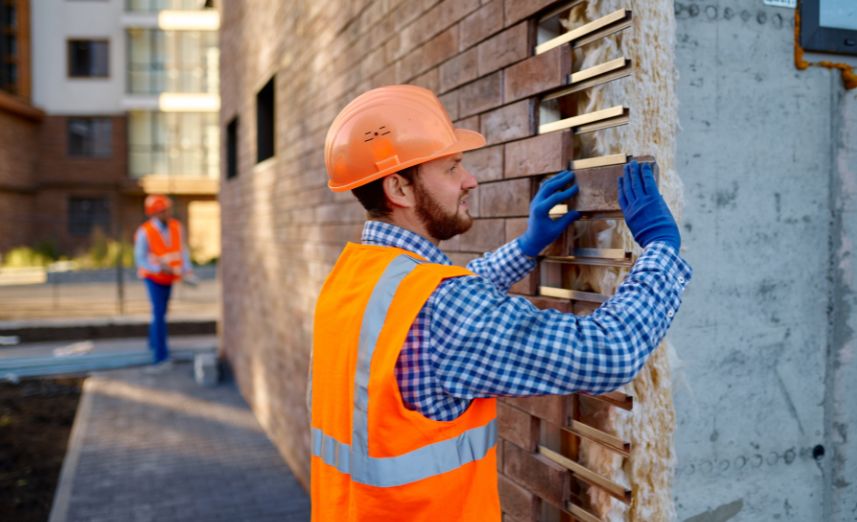Why Invest in Professional Cladding Installation?
While the temptation for a bit of DIY or hiring a general handyman might be strong, cladding installation is a specialist skill. A flawless finish that stands the test of time requires precision, experience, and an understanding of building science. An improper installation can lead to costly problems down the line, such as water ingress, damp, and poor thermal performance, completely negating the benefits.
Here’s why using a dedicated cladding installer is a wise investment:
- A Flawless Finish: A professional installer ensures every board is perfectly aligned, every corner is neatly trimmed, and the overall aesthetic is sharp and uniform. This attention to detail is what separates a stunning transformation from a subpar job.
- Durability and Weatherproofing: The primary function of cladding is to create a protective outer skin for your home. Professionals understand how to correctly install ventilation gaps, waterproof membranes, and sealants to prevent moisture from becoming trapped, which can cause damp and damage the building's structure.
- Enhanced Thermal Performance: Many homeowners choose to add a layer of rigid insulation behind their new cladding. An experienced installer will fit this correctly, eliminating thermal bridges and significantly improving your home’s energy efficiency, which can lead to lower heating bills.
- Safety and Regulatory Compliance: Since the Grenfell tragedy, regulations surrounding the fire performance of external wall systems have become rightly stringent. A professional cladding installer will be up-to-date on current Building Regulations, especially those concerning fire safety, ensuring the materials and installation methods used are fully compliant for your type of property.
- Guarantees and Warranties: Reputable tradespeople will stand by their work. You can expect a guarantee on the workmanship, alongside the manufacturer's warranty on the cladding material itself. This provides valuable peace of mind that you’re covered if any issues arise.
Understanding Your Cladding Options
The material you choose will have the biggest impact on your home's appearance, maintenance requirements, and the overall project cost. Each option has its own unique set of characteristics, and the best choice often depends on your property's style, your budget, and your long-term priorities.
Timber Cladding
Timber offers a classic, natural beauty that is hard to replicate. Popular choices in the UK include softwoods like Larch and Cedar, which are naturally resistant to decay, and hardwoods like Oak for a premium, long-lasting finish. It can be installed horizontally or vertically and finished with a variety of stains and oils to achieve your desired colour.
The main consideration for timber is maintenance. To keep it looking its best and protect it from the elements, it will need re-staining or re-oiling every few years. However, for many, the timeless aesthetic is well worth the upkeep.
uPVC Cladding
Unplasticised Polyvinyl Chloride (uPVC) is a highly popular and cost-effective cladding solution. It's a practical choice for homeowners looking for a low-maintenance finish that cleans easily with just soap and water. Available in a huge range of colours and styles, including convincing wood-effect finishes, uPVC offers great versatility.
While it may not have the premium feel of timber or fibre cement, modern uPVC cladding is durable, lightweight, and won't rot or corrode, making it a reliable and budget-friendly option.
Composite Cladding
Composite cladding is a modern material that offers the best of both worlds. Typically made from a mixture of recycled wood fibres and plastics, it captures the warm, textured look of natural wood without the demanding maintenance schedule. It’s incredibly durable, resistant to fading, and won't warp, splinter, or succumb to rot or insect attacks.
The initial cost is higher than uPVC, but its longevity and low-maintenance nature make it a fantastic long-term investment that retains its colour and quality for years.
Fibre Cement Cladding
Regarded as a high-performance, premium material, fibre cement cladding is made from a mix of cement, sand, and cellulose fibres. Brands like HardiePlank® are market leaders in this category. It is exceptionally robust, offering superior resistance to fire, rot, pests, and weathering. It can be manufactured with a smooth finish or a realistic wood grain texture and holds paint exceptionally well, offering a huge palette of colour choices.
Due to its weight and specific installation requirements, fibre cement must be fitted by trained and certified installers. It sits at the higher end of the price spectrum but provides unparalleled durability and a high-end finish.
Metal Cladding
For a contemporary, architectural, or industrial aesthetic, metal cladding in materials like zinc, aluminium, or steel is an excellent choice. It is incredibly long-lasting, requires virtually no maintenance, and offers superb fire resistance. Metal cladding can be supplied in a range of profiles and finishes, creating a sharp, modern look that makes a bold statement.
This is a specialist material that requires expert installation by tradespeople experienced in metalwork. It is one of the more expensive options, typically reserved for high-end architectural projects.

